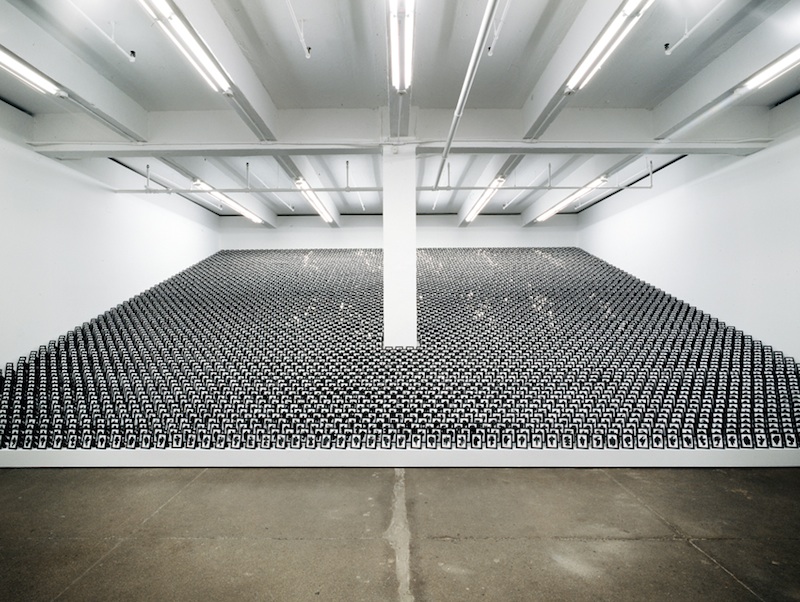
Allan McCollum, The Shapes Project, 2005/06. Framed laserprints on acid-free bond, 5 1/2 x 4 1/4 inches each, each unique. Installation view at Friedrich Petzel Gallery, New York. Photo: Lamay Photo © Allan McCollum. Courtesy the artist.
In conjunction with the launch of the Art21 Magazine and the theme of this first issue, “Becoming an Artist,” we’ve released a previously unpublished interview with artist Allan McCollum, who is featured in Season 5 of Art21’s film series Art in the Twenty-First Century. In this interview, McCollum reflects on early influences, from his famous uncle Jon Gnagy to post-war mass production and science fiction films.
Art21: How did you come to the idea of being an artist?
Allan McCollum: I didn’t think of being an artist until I was twenty-four years old. That’s when I started reading and learning about art. Everyone in my family had some kind of artistic interest. Most of them knew how to draw in some way or another. When I look back on my childhood in a working class suburb, so many men of my father’s generation had a workshop in the garage and they would fantasize that maybe, one day, they would invent something and not have to work in the factory anymore. I’m sure some of them achieved that, but not all of them. This idea of having a little workshop in the home is I think somewhere at the root of deciding I wanted to have a studio. It didn’t come from going to museums and wanting to be whatever you want to be when you’re learning about contemporary art. It wasn’t about trying to get into the textbooks because I was a great critical thinker. It had to do with wanting to be in business for myself and in charge of my own destiny in some way, to make things that I could sell to make a living. The connection to factory labor and those kinds of things is very clear to me.
Art21: What about your uncle who did the program called Learning To Draw?
McCollum: Yes, my uncle Jon Gnagy had a television program on Saturday mornings—fifteen minutes of teaching you how to draw a landscape, portrait of a dog, or something like that. It was a wonderful program. I watched it every weekend.
Jon Gnagy grew up in one of those utopian religious communities where everybody knew how to do everything. It was his thinking that no one should be able to say, “I can’t draw” or “I don’t know how to sing” or “I don’t know how to play an instrument.” He thought we should all share in that. He had a very liberal outlook on class-oriented society and it was what he was constantly saying on television: “All you need to do is know is how to draw a circle and a cube and a sphere and a cone. If you can do that, then you can draw anything.” He would sell you on how you could be an artist. It was great. He had to be an influence on me.
Jon Gnagy lived in New York at that time, but visited us in California on holidays and occasionally would help us draw. I didn’t know him well, but I was extremely impressed with him—he was my uncle and he was on television. I didn’t associate him with contemporary art though and he didn’t talk about contemporary art. When he made references to fine art, he’d mention Cezanne. It wasn’t until I started becoming an artist that we got to talking and I realized he did know about abstract painting and who the artists were. He had just chosen not to be that. I intuited from him that he never painted or drew anything unless he could teach someone else how to do it. Without even verbalizing it, I think this became a law in my head, because as an artist I have never done anything that I couldn’t easily show someone else how to do.
Continue reading “Allan McCollum: In Charge of His Own Destiny” at Art21.org.




Pingback: Allan McCollum: In Charge of His Own Destiny - 1-954-270-7404